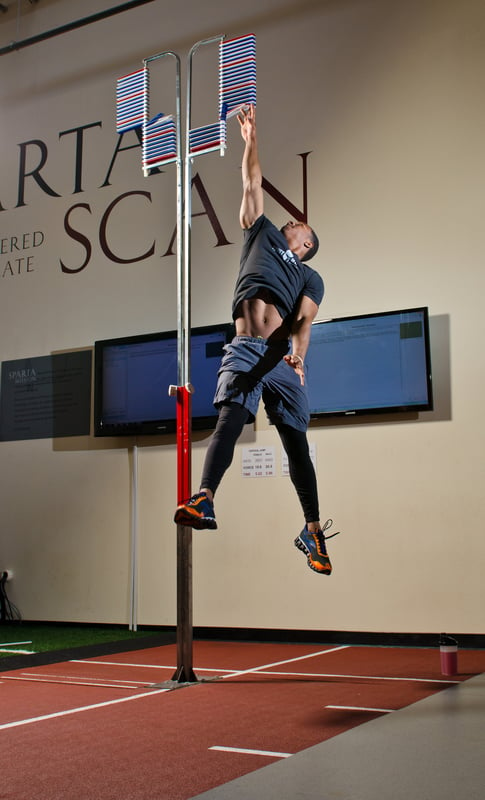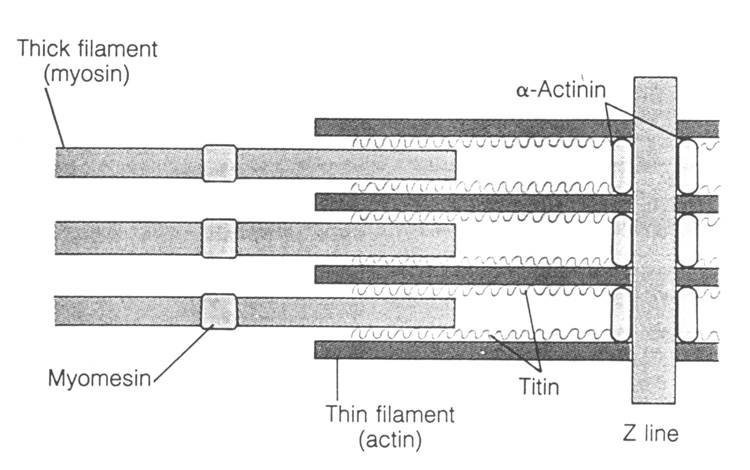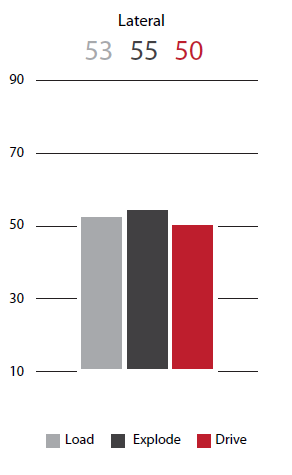
“With great power, comes great responsibility”
Voltaire (or more recently, the advice to Spider Man)
I have used this quote before, but seems more appropriate after I spent the past week assessing movement signatures among NFL players. Many of the perimeter skill guys, particularly wide receivers, were expected to have a linear Movement Signature. After all, these type of athletes are usually ectomorphs with longer strides that support straight ahead speed, hence the name linear.
However, these athletes had a lateral Sparta Signature, showing a lower DRIVE, rather than the lower LOAD found in linear athletes. The coaching staff and I discussed reasons behind these findings, and one of the coaches asked if we had any pure sprinter data. We have data from training Olympic medalist sprinters, and they also exhibit this lateral signature. So while both example athletes excel at linear speed, the neuromuscular system is not all biomechanics and planes of movement; physiology of muscle function is the workhorse behind the operation.
During this coaching conversation, the concept of efficiency was postulated because these wide receivers also fatigued easier on the field. While I was a coach at UCLA, I can remember 400 meter Olympians on the grass writhing from exhaustion after only 2 sprints of 200 meters(400 meters of total volume!). In such explosive situations (pro football, track & field), one of the defining characteristics of success is a higher percentage of fast twitch muscles.

There are 2 major types of fast twitch muscles, type IIa and IIb, though like most things in life it really represents more of a continuum rather than distinct categories. Type IIa are more intermediate, using both aerobic and anaerobic metabolism , while Type IIb fibers generally produce more force quickly, which subsequently causes fatigue sooner. But regardless of IIa or IIb, each muscle fiber is composed of long tubes called myofibrils which in turn are composed of filaments. There are two types of filaments: actin (thin filaments) and myosin (thick filaments) which are arranged in parallel. A muscle contraction involves these filaments sliding past each other.
Actin filaments are stabilized by actin binding proteins known as actinins, encoded by genes such as ACTN3, which are only found in fast twitch muscles, while other forms like ACTN2 are found in all skeletal muscle types. This gene has two different variants or mutations, R and X, inheriting one allele from each patient. The X variant produces ACTN2 proteins instead of ACTN3. People with R variants produce more ACTN3 proteins in the fast twitch muscles, making them suited for quick, explosive actions. People with the XX variants do not produce ACTN3 protein, and may produce more ACTN2 protein which increases their endurance capabilities. Furthermore, these mutations in the ACTN3 gene is often based on ethnicity, Africans having the lowest incidence of the mutation whilst Asians have the highest.

Fast twitch individuals appear to contain a lower DRIVE on their Sparta signature. We have correlated and even published a 2013 study on elite athletes that play more explosive sports have this profile. The ability to produce large focus (LOAD/EXPLODE) just overpowers other temporal characteristics like DRIVE.
After diagnosis, musculotendinous risks are certainly identified from low DRIVE, yet we must ensure these explosive athletes’ muscle fiber characteristics do not make adaptations that impede their sport success. We have developed a threshold, a T score value relative to other elite athletes, that is an indicator for absolute injury risk. The other aspect is relative risk, the more fast twitch fibers, the greater the discrepancy becomes when comparing LOAD and EXPLODE to DRIVE. The difference between these variables also has a red flag threshold for injury.
The tough part for many becomes figuring out the why, is it from the ACTN3 gene and a greater proportion fast twitch fibers, or is it a result of training history, etc. The honest answer is that we don’t really care why since it does not help our athlete today. We address the lower DRIVE in explosive athletes until the threshold is acceptable. Either gross movement patterns improve to compensate for such explosive characteristics, or muscle fiber behavior at the cellular level shifts to produce a more efficient result.
If the goal is aligned with the individual’s Sparta Signature and the sport’s requirements, we prefer to leave the “WHY’s” to the historians.
Seto JT, Quinlan KG, Lek M, Zheng XF, Garton F, MacArthur DG, Hogarth MW, Houweling PJ, Gregorevic P, Turner N, Cooney GJ, Yang N, North KN. ACTN3 genotype influences muscle performance through the regulation of calcineurin signaling. J Clin Invest. 2013 Oct 1;123(10):4255-63.